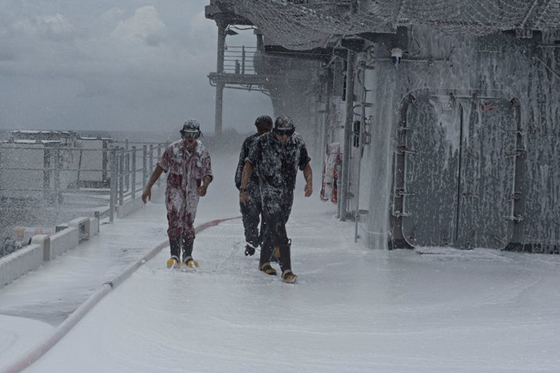
Aboard the USS Bonhomme Richard – East China Sea. Brutal winter scene? Think again. Sailors check the efficiency of the aqueous film forming foam (AFFF) system during a test on the flight deck of the amphibious assault ship on August 7, 2016. It was an overcast day and temperatures reached 97 degrees in the region. U.S. Navy photo
The Navy has convinced the public that its ships are protected against catastrophic fires because they are all outfitted with extremely sophisticated firefighting sprinkler systems equipped with aqueous film-forming foam known as AFFF, or “A triple F.” In the case of the tiniest flame, the sensitive system was designed to automatically douse a fire in just a few seconds, so we were led to believe.
Since 2015 or so, the Navy had become very aggressive in its public posturing in defense of the highly carcinogenic foams because of increasing public concerns regarding the health of servicemembers, civilians in close-by communities, and the environment. Hundreds of Navy photos are still publicly available showing the activation of these foam-generating systems on dozens of ships deployed around the world. The Navy has steadfastly fought the notion that the AFFF should be replaced with fluorine-free, or 3F foams that much of the world uses today to fight super-hot petroleum-based fires.
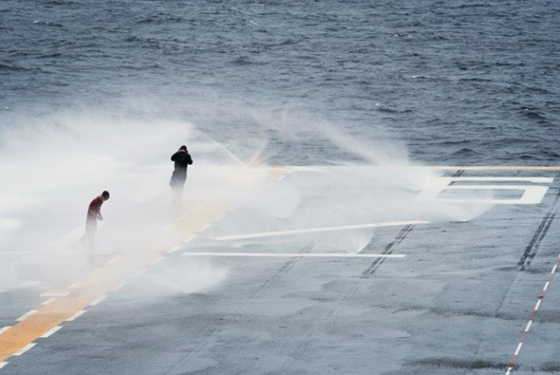
Sasebo, Japan, August 7, 2016 – Sailors assigned to amphibious assault ship USS Bonhomme Richard (LHD 6) inspect aqueous film forming foam (AFFF) system distribution nozzles on the ship’s flight deck. – U.S. Navy photo
Rather than surrendering to reason, the Navy has employed in-your-face tactics to convince the public that the use of the deadly carcinogens was worth the human health and environmental cost because the AFFF-loaded systems containing PFAS in concentrations up to 9.5 billion parts per trillion of PFOS and 99 million parts per trillion of PFOA were designed to save lives in the case of a fire, especially on a ship.
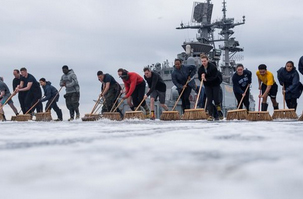
Sea of Japan – April 9, 2017 – Air department Sailors scrub the flight deck of the amphibious assault ship USS Bonhomme Richard (LHD 6) following an aqueous film forming foam (AFFF) washdown. The cancer-causing foams are swept into the sea. – U.S. Navy
It doesn’t matter to the Naval command that the use of the foams is sickening the Japanese and innocent people around the world. Today, the Navy has shrugged off the concerns of Japanese citizens, and increasingly, the Japanese government that the use of the carcinogens is an ecological disaster. Recent blood tests in Okinawa show dangerously high blood levels of PFAS in regular folks living on the tiny island which is home to most US naval forces in Japan.
It doesn’t matter that Okinawan activists and academics have been consistently appealing to the Navy to stop using the chemicals and to clean up the destruction it has caused to surface water, soils, sediment, groundwater, and drinking water. The Navy won’t hear it. The foams dumped into the ocean bioaccumulate in seafood at many thousands of times the ambient water levels. The Navy doesn’t give a damn. They’re on a mission.
The rest of the story
The USS Bonhomme Richard was completely destroyed in a fire in July, 2020
Immediately, the Navy pointed to a disgruntled, entry-level seaman recruit as the arsonist – The Navy was certain they had their guy
The Naval command said Seaman Recruit Ryan Sawyer Mays ignited cardboard boxes early Sunday morning, July 12, 2020 in a lower vehicle storage area on the vessel. The Navy prosecutor said in court proceedings in 2022 that Mays wanted to “drive home his text earlier to his division officer that the ship was so cluttered with contractors’ stuff it was “hazardous as (expletive).”
More than 60 sailors and civilians were treated for minor injuries, heat exhaustion and smoke inhalation.
The prosecutor, Capt. Jason Jones, told the judge there was no doubt the Navy “loses the ship” that morning, but Mays is to blame for igniting it. “That sucker punch from behind, that’s what the Navy could have never prevented,” he said.
Mays had dropped out of Navy SEAL training after five days in 2019 before being reassigned to the USS Bonhomme Richard. “Mays thought he would be jumping out of helicopters on missions with the SEALs, but instead he was chipping paint on the deck of a ship, and he hated the Navy for that,” Jones said.
The Navy found more than a half dozen crew members of the USS Bonhomme Richard who gave testimony in the arson case against Ryan Sawyer Mays. One sailor said he was “100% sure” it was Mays. On the stand, though, the sailor admitted that his account had evolved under pressure from law enforcement.
Another sailor said he was certain that he saw the suspect in the area where the flames ignited,
Mays was heard to say when he was being escorted to the brig, “It had to be done. I did it.” The defense said Mays, known for being flippant, was being sarcastic after denying doing it more than 150 times during 10 hours of questioning by investigators.
Investigators said they found a bottle that tested positive for highly flammable liquids and evidence of a tampered crime scene, including fire hoses that had been disconnected.
Three sailors, including his superior, testified that Mays was combative, disrespectful and had a poor attitude. A federal investigator said Mays stood out for his hatred of the fleet and his desire to get back to SEAL training. He said he caught Mays in lies while interviewing him.
It was all a lie. The Navy tried to pin the fire on a 20-year-old who had nothing to do with it.
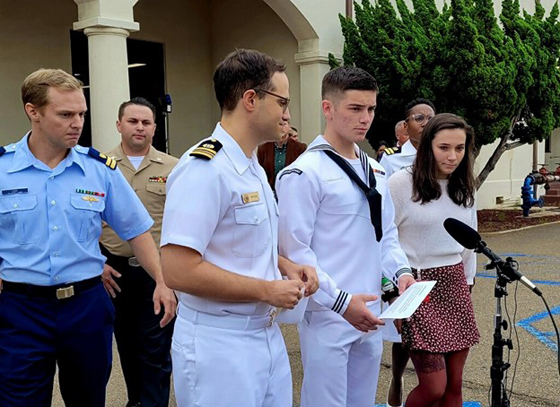
Ryan Sawyer Mays speaking outside a Navy courthouse in San Diego – US Navy Photo
A Navy judge cleared Seaman Recruit Ryan Mays of all charges over the fire that engulfed the U.S.S. Bonhomme Richard in 2020. “Mays, according to the account by the New York Times, who had been facing life in prison if convicted on charges of aggravated arson and willful hazarding of a vessel, wept with his head on the defense team’s table after hearing the verdict. Then, dressed in a crisp white uniform, he pushed through the crowded courtroom to embrace his wife and his parents. His father held him tight and said, “I never had a doubt.”
The chief fire investigator determined the cause of the fire was an open flame to thick, cardboard containers stacked in the lower vehicle storage area. Although no liquid was found, he determined that an ignitable liquid was used and said that a fire can be ruled arson without finding the ignition source. An expert in electrical engineering told the Navy court that an electrical short in a forklift or some faulty batteries could have sparked the fire that ultimately led to the catastrophic fire.
No one knows the exact cause of the fire and if they do, they’re not telling us.
In either case, the fire could have been confined to a relatively small area on the ship. The complete destruction of the ship was a result of carelessness and complacency on the part of Navy commanders. Due to a combination of inadequate maintenance, insufficient oversight, and lack of integrity, quarterly AFFF sprinkler maintenance was falsely certified as complete prior to the fire.
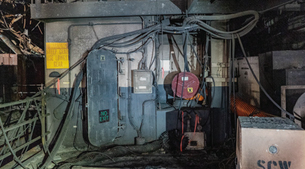
Photo of AFFF push-buttons for the sprinkler system. An open hatch obstructs visibility of the push-buttons.
As we’ve seen through photographic evidence supplied by the Navy, the ship was equipped with extensive AFFF suppression systems and hoses. At no point in the firefighting effort were any of them used, in part because they were degraded, maintenance was not properly performed to keep them ready, and the crew lacked familiarity with their capability and availability.
The AFFF push-buttons did not function. While some members of the crew were
aware the pushbuttons for AFFF were nonfunctional, this information was not
widely known and the crew was confused regarding the system’s capabilities.
The comedy of errors is reminiscent of the tragicomedy of catastrophic and amusing
elements that played out in Hangar 539 at Marine Corps Air Station Futenma in
Okinawa two months earlier. Military Poisons received the results
of a FOIA request that described the chaos.
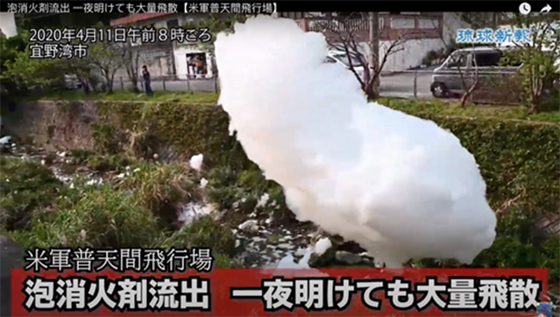
Fire extinguishing foam containing the chemical toxin PFOS that leaked into the Uchidomari river running near U.S. Marine Corps Air Station Futenma is shown in this image provided by the Okinawa Prefecture city of Ginowan.
The Marines lit a barbecue on the flight line using charcoal and lighter fluid. The fire detection and aqueous film-forming foam (AFFF) fire suppression system went off the second the charcoal was ignited. The prolific foam machine cranked out 3,000 gallons-per-minute of AFFF. The fire suppression system ran for 28 minutes. Foam coated the town.
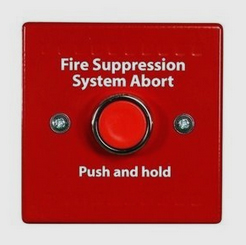
The Marines couldn’t figure out how to turn the system off. The way the command tells it, “No one understood the operation mechanism of the abort buttons distributed throughout Hangar 539.” It was the same story on the Bonhomme Richard, except in this case, no one could figure out how to turn the system on.
Drills on the Bonhomme Richard did not simulate use of Aqueous Film Forming Foam (AFFF) throughout the ship, failing to prepare the crew to activate AFFF in the event of a real fire.
It was a total cluster ****
According to the final investigation:
The AFFF system was partially available on the day of the fire, but the duty section lacked the requisite knowledge to operate the system. Although the system was only partially available, with a properly trained crew, it could have been employed to slow the fire’s spread.
- Poor maintenance practices left the system in a significantly degraded readiness state that was not understood by nearly all Ship’s Force.
- The Commander, Naval Surface Force Pacific Fleet Port Engineer for the ship was not certain of the AFFF system’s status on 12 July 2020
- Some of the Command Duty Officers thought the system was completely offline and unavailable while others thought the system was partially available.
- The majority of those interviewed from the crew considered the AFFF system to be being largely unavailable on 12 July 2020.
- Duty Fire Marshals said they were unfamiliar with the AFFF system, its operation, and their responsibilities with respect to the AFFF system.
- 792 of the ship’s 807 portable firefighting extinguishers were not working.
- The Navy issued “punitive letters of reprimand and forfeitures of pay” to Capt. Gregory Scott Thoroman, former commanding officer, and Capt. Michael Ray, former executive officer. They were each fined $5,000.
The Navy may impose nonjudicial punishment (NJP) upon persons accused of minor offenses after a streamlined legal proceeding – called “Captain’s Mast” A NJP is a disciplinary measure less serious than trial by court-martial that provides commanders with an essential and prompt means of (1) maintaining good order and discipline and (2) promoting positive behavior changes in service members without the stigma of court-martial.
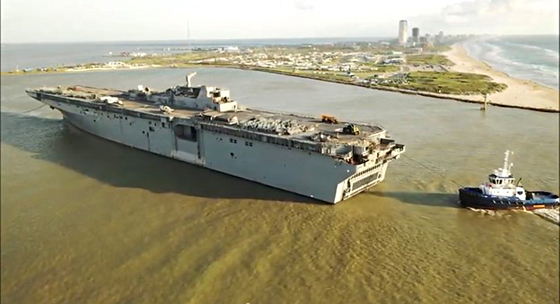
The charred USS Bonhomme Richard being towed to a scrapyard in Brownsville Texas. Repairs to the ship were estimated to take up to seven years and cost up to $3.2 billion so the ship was decommissioned on tax day, April 15, 2021, and sold for scrap. The replacement cost for the ship was estimated at $1.3 billion. A third of the nations on earth don’t spend this much on their militaries. – US Navy Photo
Pat Elder is the Director of Military Poisons, an organization that is working to raise awareness of the deadly contamination caused by the military in the United States and around the world.


